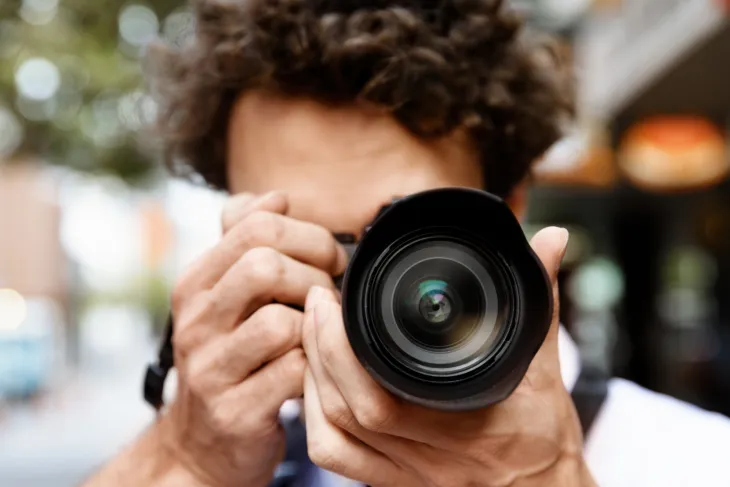As a content creator, you must be familiar with stock photos and utilize them to make your projects appealing. However, did you know that you can get into legal issues due to image misuse – even if it was unintentional from your side?
In a world where posts with pictures get 150% more views, it’s clear that images are powerful. But there’s a catch: You must know how to use them legally.
Or else you can get sued for $8,000 or even jail time for using a copyrighted photo!
Thankfully, it is pretty easy to stay safe from potential legal trouble. You just need to understand different picture rules. So, let’s explore the right way to use stock images without breaking any rules.
Licensing Types
Understanding stock image licenses is essential before uploading stock pictures on your website. There are typically four types of licenses offered by stock photo agencies. Let’s get educated on what they are and how to use them.
Royalty-Free (RF): A Royalty-free license will let you use the image for an unlimited time after paying a nominal fee. It is a popular option for individuals and marketers seeking affordable images for personal and commercial projects.
The terms of this license are pretty straightforward and allow versatile usage with freedom for editing. However, their vast availability makes them non-exclusive. This means that the same image can be used by other websites as well.
There are also some restrictions associated with royalty-free licenses. For instance, you cannot share or transfer the image to a third party. To ensure compliance, checking the agreement first before using stock images from any website is important.
Rights-Managed (RM): Rights-managed licenses tend to be far more restrictive than RF. With an RM license, you can use the picture once only. It is one of the most expensive licenses, yet very exclusive.
The price of a stock image with an RM license can be calculated based on the following criteria:
- Image display size
- Duration of use
- Medium of use
- Geographical location
You can negotiate the terms associated with the license according to your requirements. However, you may have to update the image provider regarding the use and compliance with the agreed terms.
Extended Licenses: This type of license is very similar to the standard royalty-free one, but it removes two important restrictions:
- The reselling rule
- The print run limit
Extended licenses can be used for larger print runs, thereby introducing the possibility of using the image in product designs that can be resold for profit. Among the products that can be resold for profit are mugs, t-shirts, stickers, and caps.
Creative Commons: Creative Commons licenses are categorized into six types, each providing free copyright licenses. This includes:
- CC BY (Attribution) – You can use, modify, and distribute the work for any purpose as long as you provide attribution.
- CC BY-SA (Attribution ShareAlike) – This license allows others to reuse, remix, adapt, and distribute the work. When you make an adaptation, you must give it the same license.
- CC BY-NC (Attribution Non-Commercial) – It enables a person to reuse, remix, and redistribute the work, but for non-commercial purposes only.
- CC BY-ND (Attribution – NoDerivatives) – This CC license only allows the reuse and distribution of work for commercial use without any adaptations.
- CC BY-NC-SA (Attribution Non-Commercial ShareAlike) – It allows the reuse, remixing, adaption, and distribution of the work, but for non-commercial purposes only.
- CC-BY-NC-ND (Attribution-NonCommercial-NoDerivatives) – This license by CC allows others to reuse and distribute the image for non-commercial use only. Adaptation and commercial use are prohibited.
Under these licenses, you can use photos, videos, or any other creative product free of charge. Many reputable websites provide images with a Creative Commons Zero license. But again, it is essential to understand the terms carefully before downloading any picture from their repository.
The Golden Rules of Stock Image Usage
While stock images are an excellent source for high-quality visuals, avoiding legal issues with stock photos is important. Let us now cover the rules of using stock photos:
Don’t Use Images from Google – Using images from Google is a malpractice that most content creators do. However, this is a critical mistake, and doing so will do you more harm than good. It is important to know that Google is simply a search engine and doesn’t hold the copyright for any images it displays.
Yes, you may notice that many photos on Google Images don’t have a price tag or watermark. But, it does not imply that the images are up for commercial use.
There are laws that protect the unauthorized use of images. Therefore, you need to seek permission from the copyright holder. You can use images from Google only when it is distributed under an open license.
Attribute Photos Properly When Required – Image attribution promotes transparency and demonstrates ethical behavior online. Attributing images correctly is important to acknowledge the creator’s work. Even though most stock image websites don’t enforce attribution on the buyers, it is fair to give credit when you use someone else’s work.
When giving credit, make sure to include the following for accuracy:
- The title of the image
- The URL
- The name of the creator
- Description of the image (optional)
Ensure that all these are displayed directly underneath the image. This not only upholds ethical standards but also shows the reliability of the content you produce.
Check the Model Releases – Before using a stock image, you should verify model releases. The model releases are typically a short document signed by the photo’s subject (or their owner). The subject includes humans (whose faces are visible), pets, landmarks, and private properties.
This permits the photographer to use it according to the terms and conditions defined in the release. Ensuring a model release will protect you from potential legal complications.
Many reputable sites for stock photos specify whether model releases for certain images are available or required. Verify the same before using the pictures from their platforms.
Use Images for Their Intended Purpose Only – Stock images that you find on different websites come with specific usage restrictions and licensing terms. Violating these terms by using images for unrelated purposes can lead to copyright infringements.
The best practice is to review the licensing agreements before using the image. Always ensure that your usage aligns with the purpose stated in the agreement. If you need the image for a different context, you should look for different visuals or obtain additional licenses.
The key is to respect the guidelines if you want to protect yourself from image copyright violations.
Modify the Images Responsibly – More often than not, the licensing agreement of stock images allows you to modify the image. While you have permission, make edits within the constraints of the license agreement.
The change should never misrepresent the original content and should only be done to enhance its relevance to your project. If there’s any watermark on the image, do not remove it and keep the copyright information intact. All this will ensure that your content aligns with the license terms, thus preventing you from falling into copyright infringement.
Key Takeaway
Visuals speak volumes, but you must master the art of using stock images to avoid legal trouble. Sourcing images in the right way is indeed one of the biggest challenges faced by marketers. While stock photo sites provide the best solution, you need to take some legal measures to prevent copyright infringement.
Remember to select, modify, and share the images responsibly, all while complying with the license agreements. Get in touch with our team for more web design and development solutions.







